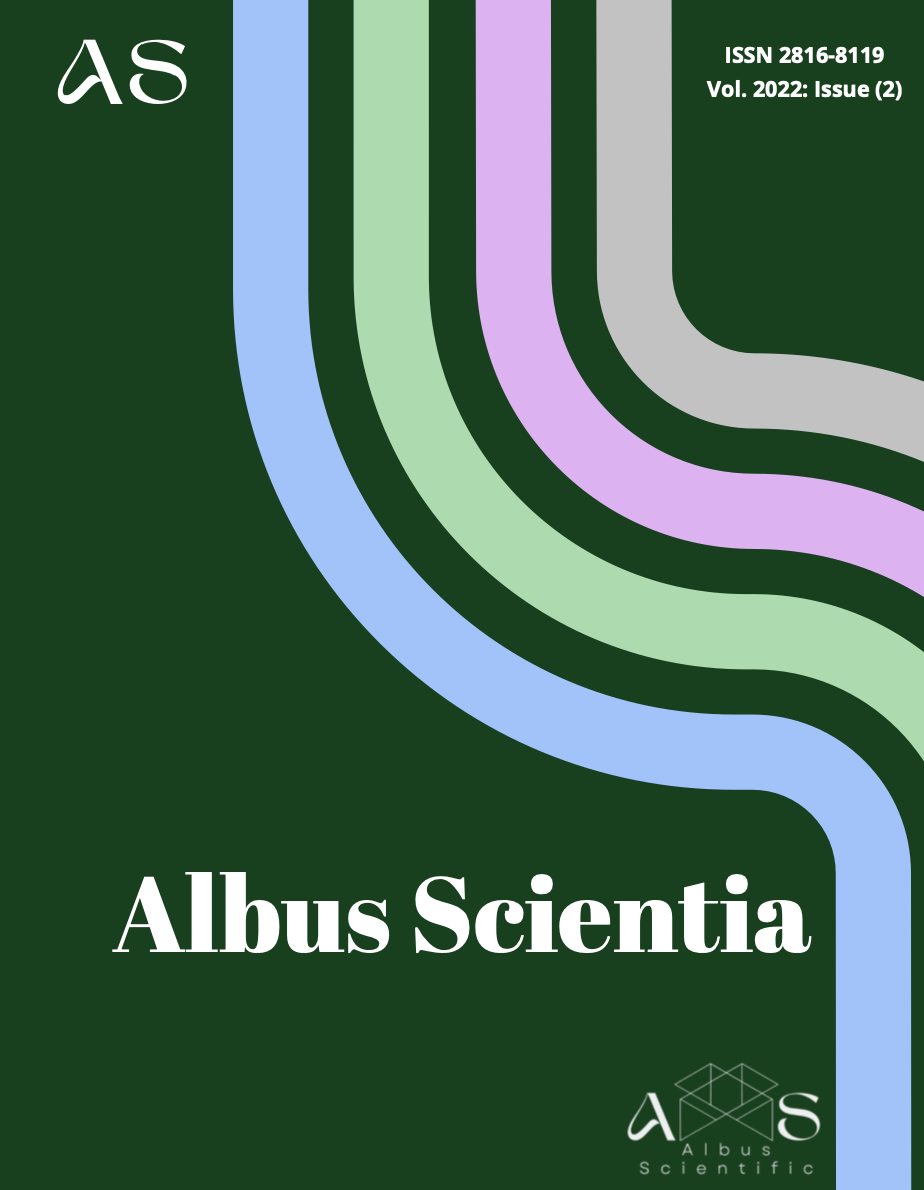Serum Lipid Variation in Patients with Dengue Virus Infection and Associated Risks of Cardio Vascular Disorder
Main Article Content
Abstract
Background: Dengue virus (DENV) is a most prevalent arbovirus with about 100 million infections worldwide every year. It is endemic in the subtropical and tropical areas in the world, an emerging public health threat. Serum lipidome is a key player in the immune system response of the patient for the period of dengue fever. This study was aimed to assess the lipids deviations in serum of patients with dengue fever.
Materials and Methods: Three For this case-control study blood samples of N=65 dengue patients of age ≥18 year were collected from the Mayo Hospital, Lahore. Whereas samples of 45 healthy individuals were collected from the University of the Punjab, Lahore. Blood samples from subjects were collected to analyze serum lipidome.
Results: Significantly (P < 0.001) increased serum triglyceride, total cholesterol, low density lipoprotein, and very low-density lipoprotein while a significant (P < 0.001) reduction in high density lipoprotein was observed in the dengue patient’s serum in contrast to the control.
Conclusion: We can conclude that DENV infection can contribute to dyslipidemia with subsequent cardiovascular disorder symptoms. Therefore, patients infected with DENV should monitor their serum lipid profiles to deal with DENV induced effects to the cardiovascular physiology.
Article Details

This work is licensed under a Creative Commons Attribution-NonCommercial 4.0 International License.
References
Bruckert, E., & Hansel, B. (2007). HDL-c is a powerful lipid predictor of cardiovascular diseases. International Journal of Clinical Practice, 61(11), 1905–1913. https://doi.org/10.1111/j.1742-1241.2007.01509.x
Castelli W. P. (1988). Cardiovascular disease in women. American Journal of Obstetrics and Gynecology, 158(6), 1553–1567. https://doi.org/10.1016/0002-9378(88)90189-5
Coelho, D. R., Carneiro, P. H., Mendes-Monteiro, L., Conde, J. N., Andrade, I., Cao, T., Allonso, D., White-Dibiasio, M., Kuhn, R. J., & Mohana-Borges, R. (2021). ApoA1 neutralizes proinflammatory effects of dengue virus ns1 protein and modulates viral immune evasion. Journal of Virology, 95(13), e0197420. https://doi.org/10.1128/JVI.01974-20
Durán, A., Carrero, R., Parra, B., González, A., Delgado, L., Mosquera, J., & Valero, N. (2015). Association of lipid profile alterations with severe forms of dengue in humans. Archives of Virology, 160(7), 1687–1692. https://doi.org/10.1007/s00705-015-2433-z
Félix-Redondo, F. J., Grau, M., & Fernández-Bergés, D. (2013). Cholesterol and cardiovascular disease in the elderly. Facts and gaps. Aging and Disease, 4(3), 154–169.
Friedewald, W. T., Levy, R. I., & Fredrickson, D. S. (1972). Estimation of the concentration of low-density lipoprotein cholesterol in plasma, without use of the preparative ultracentrifuge. Clinical Chemistry, 18(6), 499–502.
Gloria-Soria, A., Brown, J. E., Kramer, V., Hardstone Yoshimizu, M., & Powell, J. R. (2014). Origin of the dengue fever mosquito, Aedes aegypti, in California. PLoS Neglected Tropical Diseases, 8(7), e3029. https://doi.org/10.1371/journal.pntd.0003029
Higa Y. (2011). Dengue Vectors and their Spatial Distribution. Tropical Medicine and Health, 39(4 Suppl), 17–27. https://doi.org/10.2149/tmh.2011-S04
Hoogeveen, R. C., & Ballantyne, C. M. (2021). Residual cardiovascular risk at low LDL: Remnants, lipoprotein(a), and inflammation. Clinical Chemistry, 67(1), 143–153. https://doi.org/10.1093/clinchem/hvaa252
Kuller, L. H., & Women's Health Initiative (2003). Hormone replacement therapy and risk of cardiovascular disease: Implications of the results of the Women's Health Initiative. Arteriosclerosis, Thrombosis, and Vascular Biology, 23(1), 11–16. https://doi.org/10.1161/01.atv.0000046033.32478.6d
Mahdy Ali, K., Wonnerth, A., Huber, K., & Wojta, J. (2012). Cardiovascular disease risk reduction by raising HDL cholesterol--current therapies and future opportunities. British Journal of Pharmacology, 167(6), 1177–1194. https://doi.org/10.1111/j.1476-5381.2012.02081.x
Manolio, T. A., Pearson, T. A., Wenger, N. K., Barrett-Connor, E., Payne, G. H., & Harlan, W. R. (1992). Cholesterol and heart disease in older persons and women. Review of an NHLBI workshop. Annals of Epidemiology, 2(1-2), 161–176. https://doi.org/10.1016/1047-2797(92)90051-q
McCormack, T., Dent, R., & Blagden, M. (2016). Very low LDL-C levels may safely provide additional clinical cardiovascular benefit: the evidence to date. International Journal of Clinical Practice, 70(11), 886–897. https://doi.org/10.1111/ijcp.12881
Melo, C., Delafiori, J., Dabaja, M. Z., de Oliveira, D. N., Guerreiro, T. M., Colombo, T. E., Nogueira, M. L., Proenca-Modena, J. L., & Catharino, R. R. (2018). The role of lipids in the inception, maintenance and complications of dengue virus infection. Scientific Reports, 8(1), 11826. https://doi.org/10.1038/s41598-018-30385-x
Nordestgaard, B. G., & Varbo, A. (2014). Triglycerides and cardiovascular disease. Lancet, 384(9943), 626–635. https://doi.org/10.1016/S0140-6736(14)61177-6
Osuna-Ramos, J. F., Reyes-Ruiz, J. M., & Del Ángel, R. M. (2018). The role of host cholesterol during flavivirus infection. Frontiers in Cellular and Infection Microbiology, 8, 388. https://doi.org/10.3389/fcimb.2018.00388
Pérez-Torres, I., Guarner-Lans, V., Soria-Castro, E., Manzano-Pech, L., Palacios-Chavarría, A., Valdez-Vázquez, R. R., Domínguez-Cherit, J. G., Herrera-Bello, H., Castillejos-Suastegui, H., Moreno-Castañeda, L., Alanís-Estrada, G., Hernández, F., González-Marcos, O., Márquez-Velasco, R., & Soto, M. E. (2021). Alteration in the lipid profile and the desaturases activity in patients with severe pneumonia by SARS-CoV-2. Frontiers in Physiology, 12, 667024. https://doi.org/10.3389/fphys.2021.667024
Ravi, K., Kumar, N. K., & Malagi, A. D. (2021). The lipid profile as a marker for predicting the severity of Dengue fever. International Journal of Advances in Medicine, 8(5), 691. https://doi.org/10.18203/2349-3933.ijam20211477
Sakellarios, A. I., Papafaklis, M. I., Siogkas, P., Athanasiou, L. S., Exarchos, T. P., Stefanou, K., Bourantas, C. V., Naka, K. K., Michalis, L. K., Parodi, O., & Fotiadis, D. I. (2013). Patient-specific computational modeling of subendothelial LDL accumulation in a stenosed right coronary artery: effect of hemodynamic and biological factors. American Journal of Physiology. Heart and Circulatory Physiology, 304(11), H1455–H1470. https://doi.org/10.1152/ajpheart.00539.2012
Thejaswini, M., Kudru, C. U., Nagiri, S. K., Chakraborty, A., & Guddattu, V. (2021). Serum lipid profile in dengue patients: a simple laboratory tool to predict disease severity. Biomedicine, 41(2), 227-232. https://doi.org/10.51248/.v41i2.787
WHO (2011). Dengue fever. World Health Organization. Retrieved August 25, 2022, from http://www.emro.who.int/pak/programmes/dengue-fever.html
WHO (2022). Dengue and severe dengue. World Health Organization. Retrieved August 25, 2022, from https://www.who.int/news-room/fact-sheets/detail/dengue-and-severe-dengue
